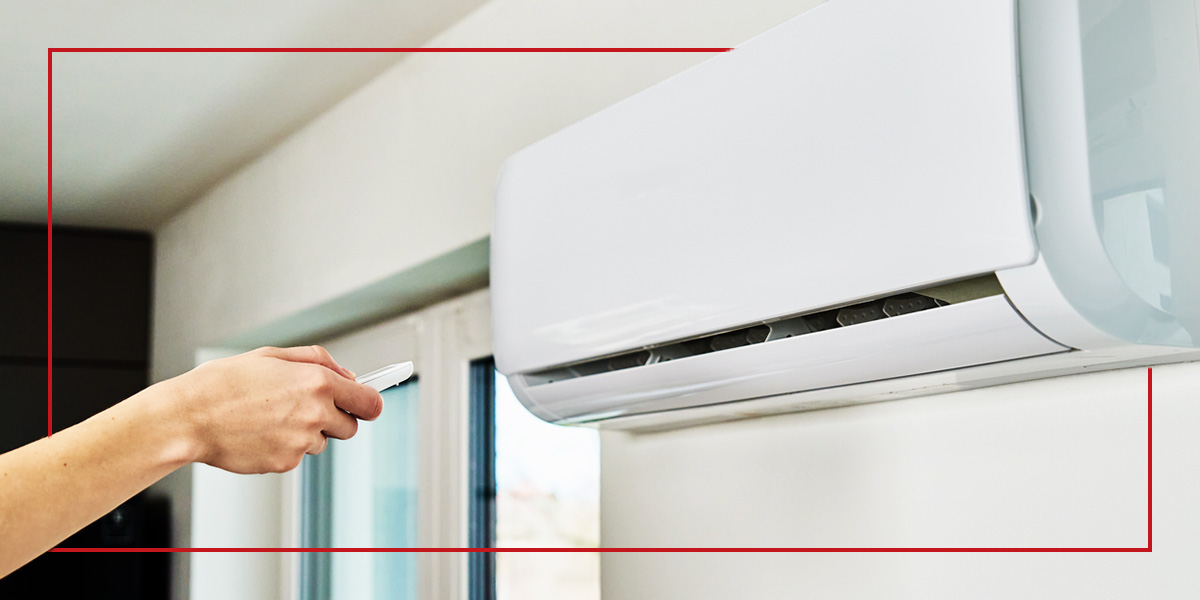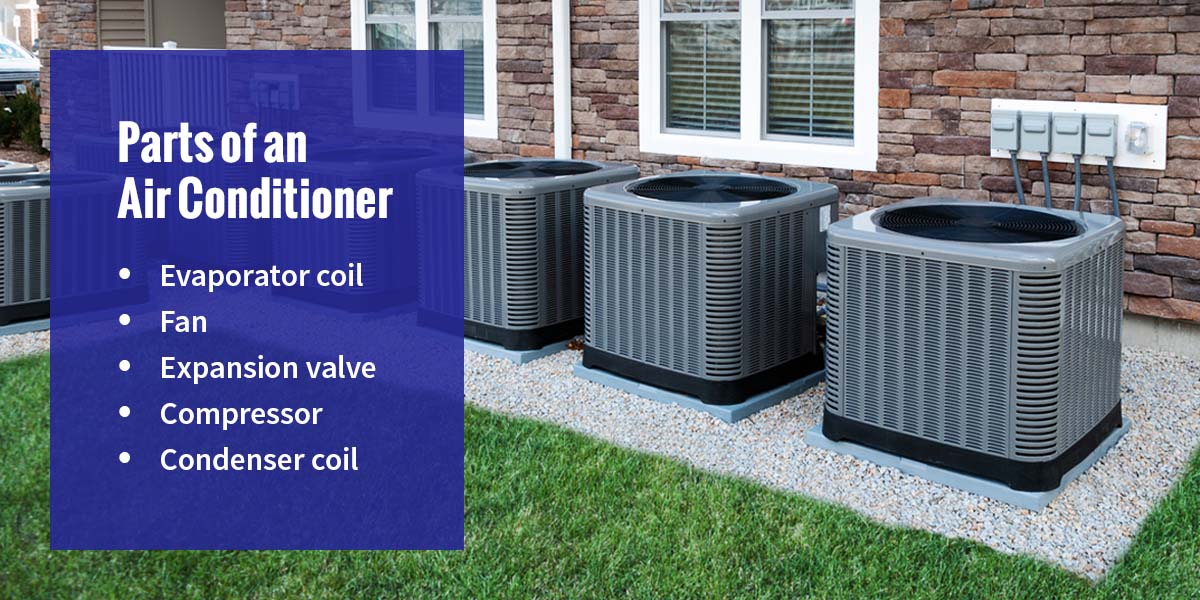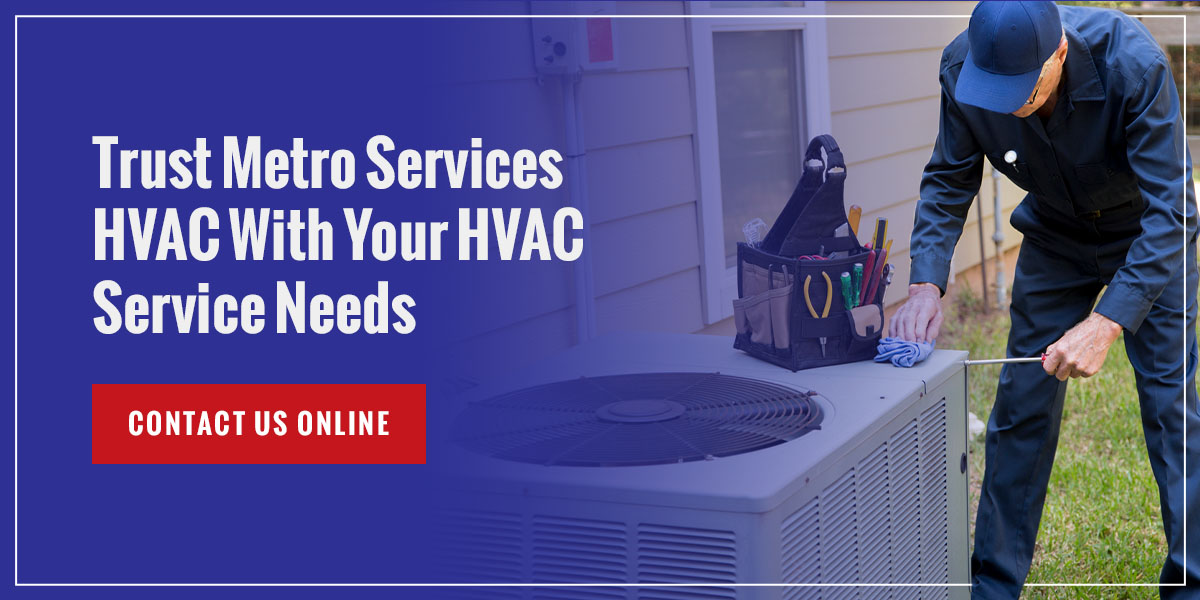
Your air conditioner works hard to keep you cool every day. Usually, AC units run so smoothly that many homeowners don’t know precisely how they work. Instead of creating cold air out of nowhere, your AC unit undergoes a process of heat removal. By removing the heat and blowing air over cold refrigerant-filled coils, your air conditioner provides your home with cold air.
Understanding how AC units work will help you learn to diagnose potential heating, ventilation and air conditioning (HVAC) issues and what parts need regular maintenance. Let’s break down how an AC unit works to help you learn more about your home.
How Does an Air Conditioner Work?
The most basic function of an air conditioner is to take warm air into its components and turn it into cool air, which gets blown back into your house. Vents in your home allow the AC unit to pull warm air into its components. Once the air is inside, it cools the air conditioner’s refrigerant. The excess heat is blown outside, and the cool air from the refrigerant is blown back into the house.

Parts of an Air Conditioner
How does an AC unit cool your home? Air conditioners rely on several key components to move heat out of your home and blow cold air inside. Each of these parts helps move air throughout the unit, working to cool warm air and keep your home comfortable. Your AC unit’s components move the refrigerant through the unit to facilitate the cooling process:
- Evaporator coil: The evaporator coil sits on the cold side of the unit. These cooling coils have cool refrigerant running through them. Air travels over these coils, cooling down.
- Fan: Your AC unit has one fan on the cold side and one fan on the hot side. The cold-side fan blows air over the cold coils and out into your home. The hot-side fan blows the hot air coming off the condensed refrigerant outside.
- Expansion valve: The expansion valve sits between the hot and cold sides, regulating the refrigerant flow from the cold side to the hot side.
- Compressor: The compressor is a pump that pressurizes the refrigerant to help turn it back into a liquid. Once it’s pressurized, the refrigerant can become a liquid and travel to the evaporator coil.
- Condenser coil: Located on the hot side, the then-hot refrigerant travels through the condenser coils. The heat from the refrigerant is released once in these coils, which is then blown outside by a fan.
Other minor components help all the AC parts work, but the above features are the major parts of an air conditioner. The exterior components house your condenser coils and fan, protecting your AC unit from the elements. Over time, debris can build up around these external components and block them from working correctly. Investing in a regular maintenance plan can save you money and avoid AC damage by preventing debris buildup and blockages.
How Air Conditioners Cool Your Home
Your AC unit’s components work seamlessly together to give you on-demand cool air during the hottest months of the year. Now that you know the main air conditioner parts, let’s break down exactly how your AC unit works to give you a more detailed picture of the process.
Step 1
Hot air from inside your house is drawn into the vents and blown over the cold evaporator coil. Cold refrigerant travels along this coil — as the hot air blows over the cool refrigerant-filled coil, the heat is absorbed into the refrigerant. The now-cool air is blown back into your home using a fan and the air ducts. It’s dispersed all over while the rest of the heat is carried away through the HVAC system.
Step 2
The once-cold liquid refrigerant turns into a gas as it absorbs heat. The evaporator and condenser coils form a continuous loop that the refrigerant travels through. Once the refrigerant leaves the cold evaporator coils, it moves along the coil loop toward the condenser. Before reaching the condenser, it first goes through the compressor.
The compressor squeezes the hot, gaseous refrigerant through two solid objects to decrease its volume. Reducing the volume increases the refrigerant’s pressure and temperature, making it even warmer than it was, and the superheated refrigerant travels on through the loop.
Step 3
After the compressor, the superheated refrigerant reaches the condenser. The condenser part of the unit sits outside your home for easier heat release.
As the hot gaseous refrigerant runs through the condenser coils, the cooler outside air draws the heat out of the refrigerant. A fan helps push the hot air from the refrigerant outside.
After having its heat drawn out, the refrigerant is a cool liquid again and goes back inside along the coil loop.
Step 4
After going inside, the cold, liquid refrigerant travels toward the evaporator coils. The whole cycle starts again as new hot air enters the system and is cooled by the refrigerant. Your AC unit will use the same refrigerant over and over in the closed-loop coil system. It’ll continuously transform from gas to liquid as its temperature changes.
Step 5
Once your home cools sufficiently and the thermostat hits the desired temperature, your AC system will shut off. As your house gradually heats up, the air conditioner will turn on again as needed.
By turning off and on regularly and only operating when your home’s temperature changes, the AC system saves energy and keeps your home at a consistent temperature. A constantly-running AC unit would use too much power and excessively cool your house.
Trust Metro Services HVAC With Your HVAC Service Needs
Air conditioners have lots of moving parts. When these components aren’t taken care of or become damaged, they can make your home uncomfortable quickly. With services from Metro Services HVAC, you can enjoy years of effective cooling.
Our installation, repair and replacement services help keep your home cool year-round and offer access to the best HVAC services in Maryland and D.C. With same-day and 24/7 services and high-quality maintenance plans, you can maximize your AC unit’s effectiveness and life span.
If you’re in need of HVAC assistance, contact us online and schedule a service today! Metro Services HVAC’s expert technicians are here to help.

